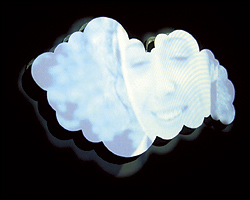On the first page of Lydia Minatoya’s novel The Strangeness of Beauty, the narrator informs us that nearly every Japanese citizen was writing down his or her life story in the 1920s and ’30s. These autobiographical novels were part of a long tradition of shi-shosetsu—”I-stories”—that date back a thousand years to Murasaki Shikibu’s The Tale of Genji and Sei Shonagon’s The Pillow Book. In modern times, the “I-story” crossed the Pacific and became a staple of Japanese-American literature. Monica Sone helped usher in Japanese-American writing with her 1953 memoir Nisei Daughter, a book that chronicled life in Seattle’s Japanese community and first documented the crushing impact of the internment of Japanese Americans during World War II.
The Strangeness of Beauty by Lydia Minatoya (Simon & Schuster, $23)
Now Seattle author Lydia Minatoya tries her hand at the form—not as veiled autobiography, but as historical fiction. This is Minatoya’s first novel; her first book, the autobiography Talking to High Monks in the Snow, was published in 1992 to high acclaim and earned her a Pacific Northwest Booksellers Association Award.
The Strangeness of Beauty begins in Seattle in 1922 and is told in the voice of Etsuko Sone (her name is perhaps a tribute to Minatoya’s literary precursor). Etsuko is born in Japan and given up for adoption by her aristocratic mother. As an adult, she emigrates to Seattle with her new husband. After he dies in a fishing boat accident, Etsuko agrees to serve as a mother to her niece Hanae, whose mother has died in childbirth. Etsuko and Hanae have little prospect of earning a living in Seattle, and so they sail for the family’s ancestral village in Japan.
In journal entries, fictional accounts, letters, and even a simple film script, Etsuko relates her struggles both as a mother to Hanae and as a daughter herself, while also observing the changes in Japanese society as it edges deeper into militarism in the 1930s. In a Japanese village, Etsuko reunites with Chie, the mother who gave her up for adoption. But Chie, the haughty descendant of an ancient Samurai family, rebuffs Etsuko’s attempts to reconnect. Etsuko is a naive optimist, uncertain as a mother, a daughter, and a writer. Only when she becomes involved in the hastily organized peace movement does Minatoya’s narrator begin to find confidence in these three roles.
Attention to historical detail is perhaps Minatoya’s greatest talent in presenting three generations of independent women as they attempt to find a place within the intricate standards of self-restraint and conformity in prewar Japanese society. The Strangeness of Beauty provides a rare glimpse into this relatively forgotten period of Japanese history. Minatoya’s setting is a vibrant amalgam of Western films and traditional festivals, department stores and elaborate kimonos. And always in the background is the gradual realization that Japan is committing terrible atrocities in its war with China. Minatoya has a firm grasp of Japanese history and culture in the 1930s, and she puts it to good use.
What is less sure is Minatoya’s skill at characterization and dialogue. She’s adopted the risky technique of laying bare Etsuko’s troubles as a first-time writer as an integral part of this first-person I-story. In a way, these self-reflexive comments attempt to deflect criticism from the flaws of a novice writer and assign them to the story’s protagonist. But as Etsuko tells us she’s “bored with my I-story” or faults her writing for its lack of action, I couldn’t help but sometimes agree with her. When the character Etsuko admits she’s didactic, we’re forced to consider whether instances of instructional and moralizing dialogue are supposed to be the result of Etsuko’s hand or are in fact missteps on the part of the author.
Minatoya writes at one point that there is a transcendence in the common and small, and that any mediocre artist or any old mother writing her diary can create myo—the Japanese concept known as “the strangeness of beauty.” But to create good fiction, common details must jump to life in surprising ways and plot, characters, and dialogue should be actively developed. In this novel, oftentimes just the ordinary or predictable prevails. This is not to say that The Strangeness of Beauty is without beautiful or interesting moments. But throughout her book Minatoya readily admits that as a form the I-story lacks the movement of plot that Western readers supposedly require; unfortunately, this prevents Minatoya from reaching the level of myo that is her goal.






